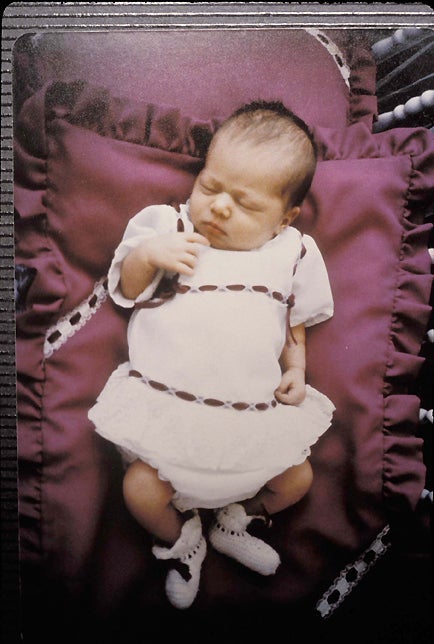Your support helps us to tell the story
From reproductive rights to climate change to Big Tech, The Independent is on the ground when the story is developing. Whether it's investigating the financials of Elon Musk's pro-Trump PAC or producing our latest documentary, 'The A Word', which shines a light on the American women fighting for reproductive rights, we know how important it is to parse out the facts from the messaging.
At such a critical moment in US history, we need reporters on the ground. Your donation allows us to keep sending journalists to speak to both sides of the story.
The Independent is trusted by Americans across the entire political spectrum. And unlike many other quality news outlets, we choose not to lock Americans out of our reporting and analysis with paywalls. We believe quality journalism should be available to everyone, paid for by those who can afford it.
Your support makes all the difference.A coroner today opened Australia's fourth inquest into the most notorious and bitterly controversial legal drama in the nation's history: the 1980 death of a nine-week-old baby whose parents say was taken by a dingo from her tent in the Australian Outback.
Azaria Chamberlain's mother, Lindy, was convicted and later cleared of murdering her and has always maintained that a wild dog took the baby.
She and her ex-husband, Michael Chamberlain, are hoping fresh evidence they have gathered about dingo attacks on children will convince Northern Territory Coroner Elizabeth Morris and end relentless speculation that has followed them for 32 years.
Anne Lade, a former police officer hired by the court to investigate the case, told a packed courtroom that in the years since Azaria disappeared, there have been numerous dingo attacks on humans, some of them fatal.
Rex Wild, a lawyer assisting the coroner, described several of the attacks and said he believed the evidence showed that a dingo could have been responsible for Azaria's death.
"Although it (a dingo killing a child) may have been regarded as unlikely in 1980 ... it shouldn't be by 2011-12," he said.
Azaria's death certificate, however, still lists her cause of death as "unknown". The Chamberlains say they want to set the record straight on behalf of their daughter.
"It gives me hope this time that Australians will finally be warned and realise that dingoes are a dangerous animal," Mrs Chamberlain said outside the courthouse in the Northern Territory capital, Darwin.
"I also hope that this will give a final finding which closes the inquest into my daughter's death, which so far has been standing open and unfinished."
Azaria vanished from her tent in the Outback on August 17, 1980, during a family vacation to Ayers Rock, the giant red monolith now known by its Aboriginal name Uluru.
Fellow campers told police they heard a low growl followed by a baby's cry shortly before Mrs Chamberlain - who had been making dinner at a nearby barbecue area - went to check on her daughter.
Mrs Chamberlain said she saw a dingo run from the tent and disappear into the darkness.
There were dingo prints outside the tent, and spots of blood on the bedding inside.
Upon seeing Azaria's empty bassinet, Lindy screamed, "The dingo's got my baby!" - a line made famous by the Meryl Streep movie, A Cry in the Dark, based on the case.
Azaria's body was never found, though her torn and bloodied jumpsuit turned up in the surrounding desert.
Officials, doubtful that a dingo was strong enough to drag away a baby, charged Mrs Chamberlain with murder.
Prosecutors said she slit Azaria's throat in the family car - which initial forensic tests said was splashed with baby's blood - and buried her in the desert. Mrs Chamberlain was convicted and sentenced to life in prison.
Years later, more sophisticated tests found that the "blood" in the car was a combination of milk and a chemical sprayed during manufacture.
Three years into Mrs Chamberlain's prison sentence, a jacket Azaria had been wearing was found by chance near a dingo den. Mrs Chamberlain was released from prison and her conviction was overturned.
Still, three separate coroner's inquests have failed to agree on a cause of death for Azaria. The last inquest, held in 1995, returned an inconclusive finding, with the coroner saying there was not enough evidence to prove a dingo was responsible.
Since then, the Chamberlains have gathered new evidence of around a dozen dingo attacks on children, three of them fatal, said their lawyer, Stuart Tipple.
That evidence has been presented to Ms Morris, the coroner, for consideration at today's inquest. Ms Morris is expected to issue her decision at a later date.
In court, Michael Chamberlain fought back tears as he spoke of the nightmarish aftermath of his daughter's death.
"Since the loss of Azaria I have had an abiding fear and paranoia about safety around dingoes," he said. "They send a shudder up my spine. It is a hell I have to endure."
Australians have followed the case closely since it began, and most have strong opinions. Although public support for Ms Chamberlain has grown over the years, many still doubt that a dingo could have killed Azaria.

Join our commenting forum
Join thought-provoking conversations, follow other Independent readers and see their replies
Comments